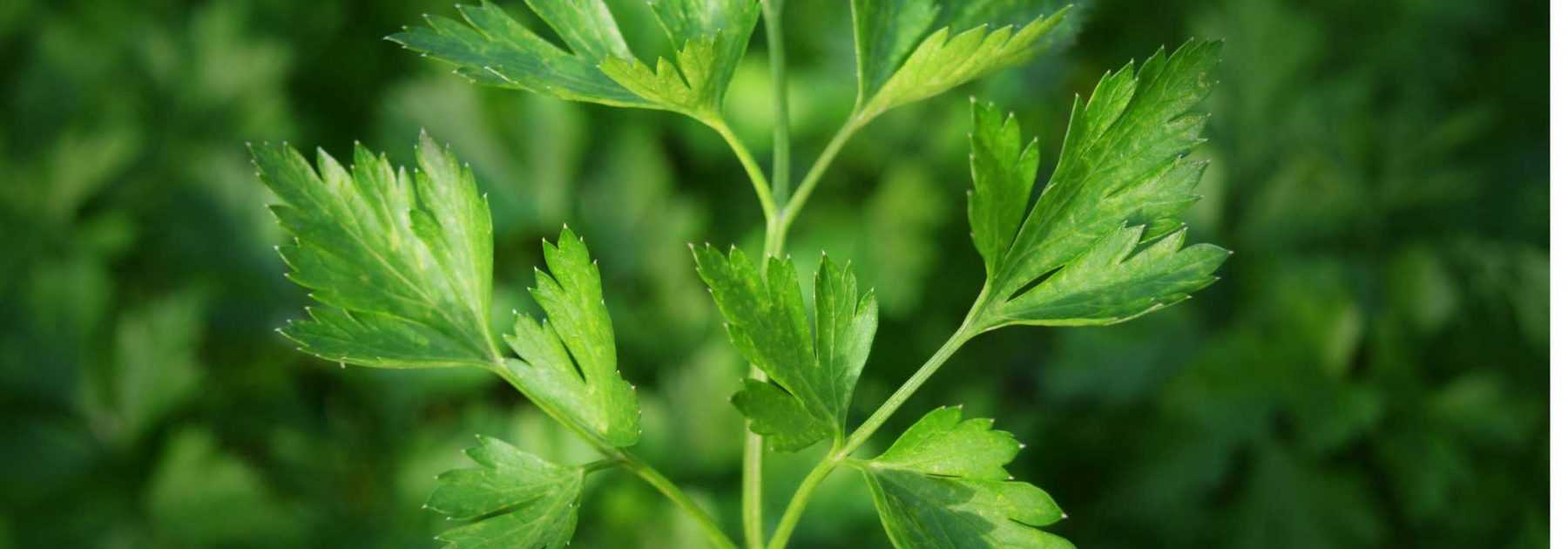
Parsley: Sowing, Planting, Growing
Contents
Parsley in a nutshell
- Parsley is a culinary herb renowned for its flavour as well as its numerous health benefits
- Flat-leaf parsley has a stronger aroma than curly parsley
- It’s easy to grow, with the only challenge being its sowing which requires patience and care
- Though typically grown as an annual, it’s actually a biennial plant whose flowers attract numerous beneficial insects in the second year
- It’s more cold-resistant than other garden herbs
- Parsley is well-known as a condiment, but less so for its use as a root vegetable
Our expert's word
Parsley is a hardy aromatic herb, easy to grow both in the ground and in pots or containers, on a windowsill or balcony. Its many varieties fall into two main types: flat-leaf parsley (petrosilum sativum) and curly parsley (petrosilum crispum). It’s a reliable garden staple as it can be harvested almost all year round. Its aromatic, fragrant leaves are widely used in cooking as well as for making herbal teas and parsley juice with numerous benefits.
As a biennial plant, parsley has a unique life cycle: during the first year of growth, it provides an abundant harvest of green leaves with virtually no problems. The second year is completely different – the leaves become paler and tougher, flower stalks appear followed by delicate umbel flowers that are highly attractive to pollinators, providing nectar for many beneficial insects.
Although you can harvest the first spring leaves in the second year, it’s wise to sow or plant new parsley annually to quickly replace the previous year’s plants.
Botany
Botanical data
- Latin name Petroselinum sativum (L.)
- Family Apiaceae
- Common name Flat-leaf parsley; Curly parsley; Root parsley
- Flowering Biennial
- Height 20 days at 20°C - Germination capacity
- Exposure sun, partial shade, or shade if summers are hot and dry
- Soil type rich, humus-rich, well-draining
- Hardiness Roots withstand temperatures down to -10°C
Parsley (Petroselinum sativum L.) is a biennial herbaceous plant belonging, like carrots, parsnips, and fennel, to the large family of umbellifers or Apiaceae.
The most well-known varieties are flat-leaf parsley and curly parsley (Petroselinum sativum var. crispum), grown for their aromatic leaves which enhance the flavour of dishes. Less common, root parsley (Petroselinum crispum radicosum) is cultivated for its root and foliage (less aromatic), grown similarly to carrots. Parsley plants typically reach 30 cm in height in their first year, though dwarf varieties are smaller. In their second year, flowering stems can grow up to 60 cm tall.
Parsley leaves are bright green, divided into three leaflets with deeply lobed segments. In its second year after sowing, parsley produces flowering stems bearing umbels of tiny greenish-yellow to white flowers from spring onwards. The pollination is entomophilous, requiring insects to transfer pollen. Insects are highly attracted to parsley’s nectar and pollen. By late summer, it goes to seed, producing small brown seeds.
In ancient Greece, parsley symbolised strength, appetite, and joie de vivre. It was also revered by the Romans, who introduced it across their empire, where it was primarily grown for decoration. It fell out of favour during the Middle Ages, when it became associated with death and poor harvests.
Read also
Sowing aromatic herbsThe main varieties of parsley
There are many varieties of parsley. They differ in the appearance of their foliage (flat or curly) as well as their size and growth habit, which can be more or less compact.

Curly or flat-leaf parsley – rather than choosing, grow both!
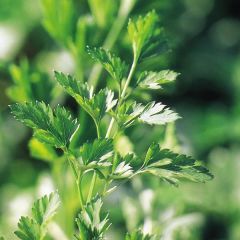
Flat Parsley Seeds - Petroselinum crispum
- Flowering time February
- Height at maturity 70 cm
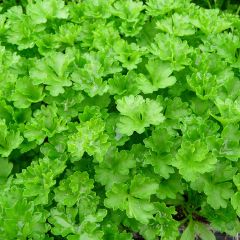
Flat-Leaved Parsley Amsterdam
- Height at maturity 60 cm
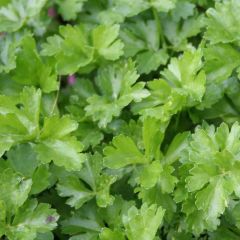
Parsley Giant of Italy
- Height at maturity 60 cm
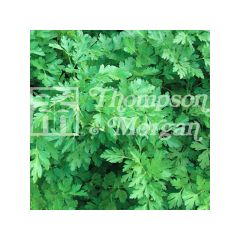
Laura Flat-leaf Parsley
- Height at maturity 60 cm

Curly Parsley Alto - Vilmorin Seeds
- Height at maturity 40 cm

Curly Parsley Bravour
- Height at maturity 30 cm
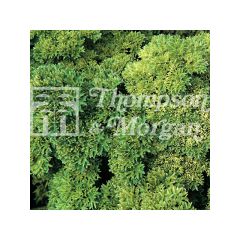
Champion Curly Parsley
- Height at maturity 30 cm
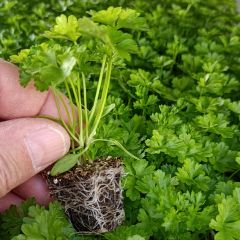
Petroselinum crispum Frisé vert foncé
- Height at maturity 20 cm
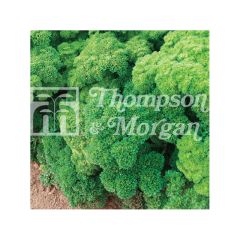
Petroselinum crispum Lisette
- Height at maturity 25 cm

Parsley Moss Curled
- Height at maturity 25 cm
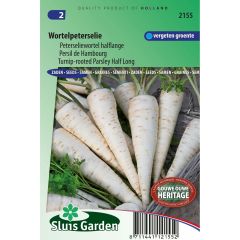
Hamburg Parsley - Turnip-rooted Parsley
- Height at maturity 60 cm
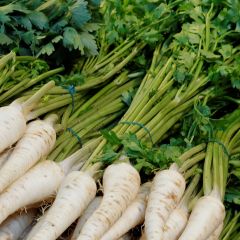
Hamburg Parsley Pietruzska - Turnip-rooted Parsley
- Height at maturity 40 cm
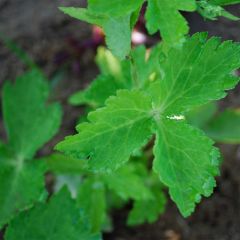
Mitsuba Parsley - Ferme de Sainte Marthe Seeds
- Height at maturity 50 cm
Discover other Parsley
View all →Available in 1 sizes
Available in 1 sizes
Available in 1 sizes
Available in 2 sizes
Available in 1 sizes
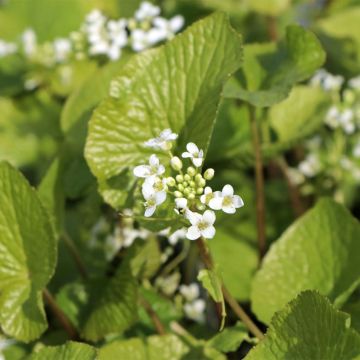
Available in 2 sizes
Available in 1 sizes
Available in 1 sizes
Sowing parsley
Parsley isn’t a plant in a hurry to germinate; you should expect an average of 20 days for sprouting at a temperature of around 20°C. This period can extend up to a month at lower temperatures. To speed up germination, it’s advisable to soak the seeds in a glass of water for a full day.
Sowing can be done in different ways: in pots, in mini soil blocks, or directly in the ground.
Sowing in pots or mini soil blocks
Preparing seedlings is the easiest way to control parsley seed germination. This method also reduces the chore of thinning. Sowing in pots can be done from March under unheated cover. The optimal temperature for germination is 20°C (minimum 15°C).
To sow in pots or mini soil blocks:
- Start by filling your containers or preparing your mini soil blocks using a soil blocker with good seed compost,
- Moisten the substrate thoroughly without soaking it excessively,
- Place three or four seeds per pot or small soil block,
- Cover with a thin layer of compost (or sand),
- Water gently using a spray bottle,
- Repeat this last step until germination: the substrate must always remain moist.
Your parsley seedlings can be planted out in the ground once they have at least two true leaves in addition to the cotyledons present during germination.
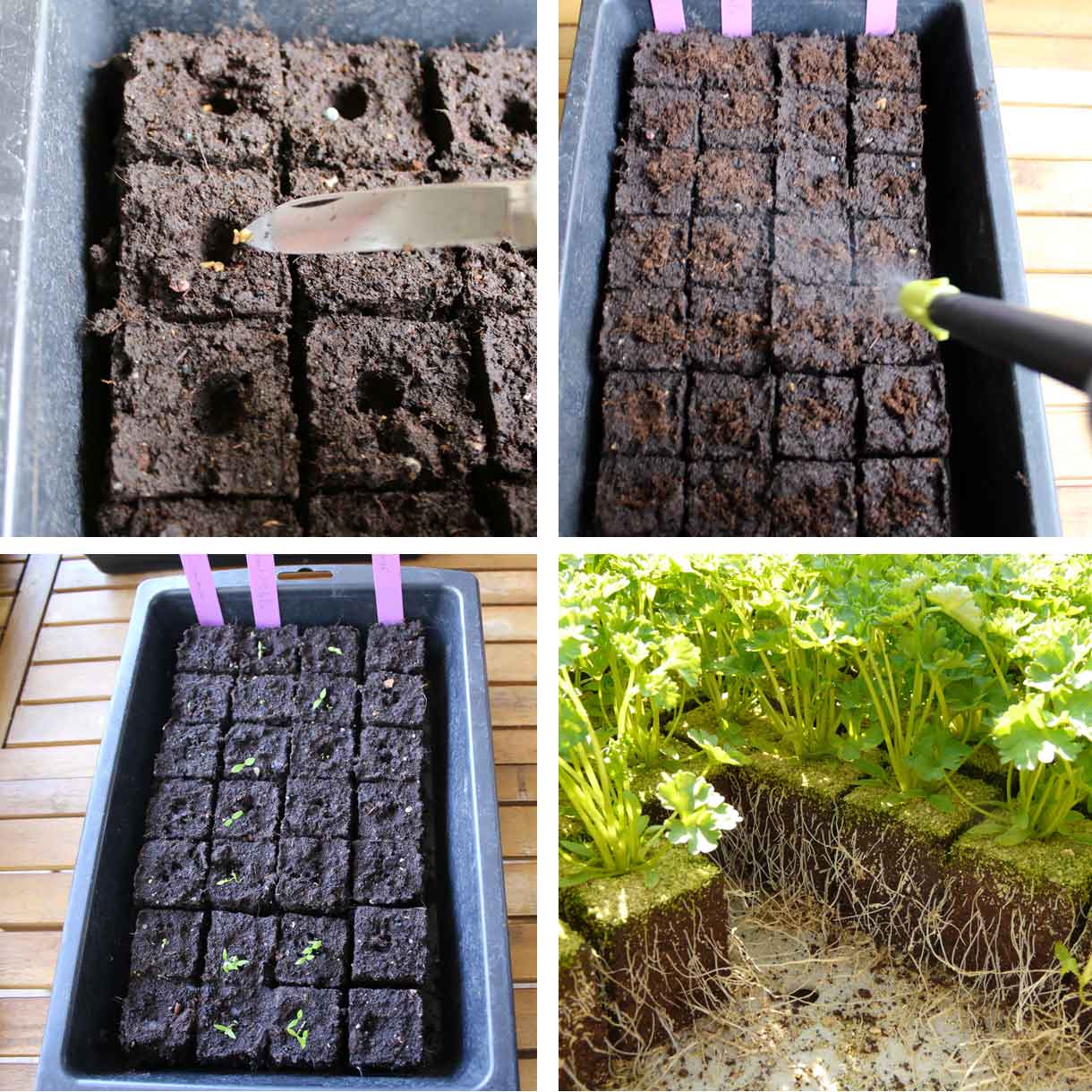
Parsley sowing in mini soil blocks: 1) Seeds are soaked in water before sowing – 2) Mini soil blocks are sprayed – 3) Germination begins after just 8 days – 4) A few weeks later, the parsley is ready to be transplanted into the garden
Direct sowing in the ground
Direct sowing in the ground is usually done in April or May. It also has advantages: it’s quick and avoids disturbing the roots during transplanting.
To sow directly in the ground:
- Rake to break up any remaining clumps and create a fine seedbed,
- Water first to thoroughly moisten the soil,
- Sow your seeds in the desired location, being careful not to sow too many,
- Cover with a thin layer of soil or compost,
- Water gently using a watering can rose to avoid disturbing the seeds,
- Mark the sowing location with a label,
- Keep the soil moist until germination,
- Continue watering until the seedlings are well established, as young plants are vulnerable to water stress.
If you’ve sown too many seeds, you may need to thin them out: learn how in our advice sheet “Thinning Seedlings“.
Tip: To maintain soil moisture, you can cover the sowing with a fabric, such as burlap, until germination.
Planting parsley, in the garden or in pots
Planting parsley in the garden
Parsley plants are planted in the garden at the end of April, once the last severe frosts have passed. If the plants come from your own seedlings, you’ll typically plant them two or three months after sowing, or earlier if they’re well-branched and reach about ten centimetres in height.
When planting, maintain a spacing of 25 cm between two plants or two clumps of several plants.
As with sowing, planting should be done in loosened and weed-free soil. To plant your parsley:
- Dig a hole matching the size of the plant,
- Place your parsley plant,
- Fill the gaps with soil,
- Water thoroughly after planting.
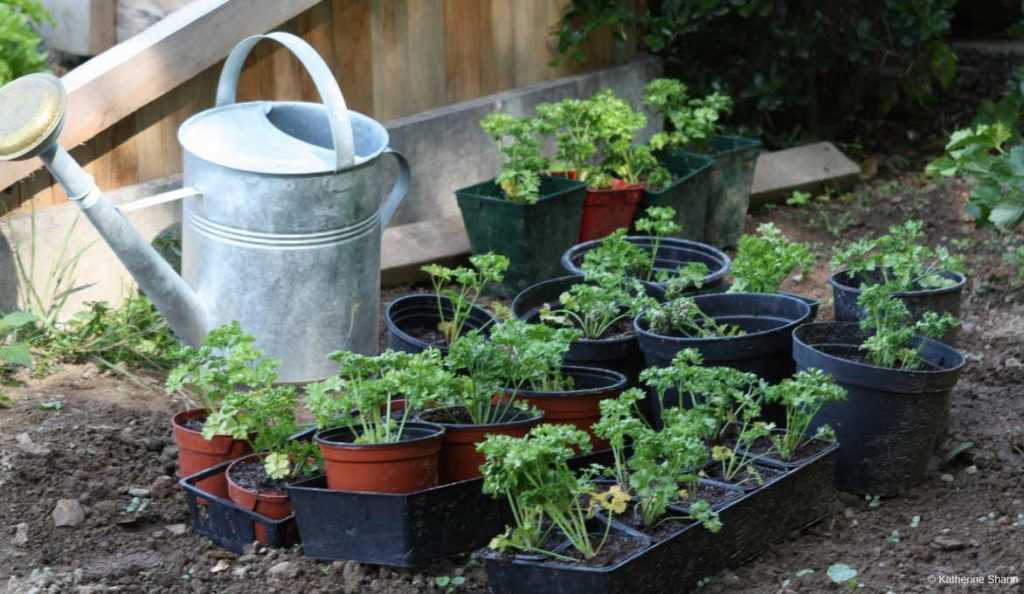
Planting parsley in the garden
Planting parsley in pots
Growing parsley in pots on a balcony or windowsill is entirely possible. It’s actually very practical to always have some within easy reach.
To plant parsley in pots:
- Place some gravel or clay pebbles at the bottom of the pot to aid drainage.
- Fill the pot with good quality potting compost,
- Loosen the roots of your plant if necessary,
- Position the rootball in its new container, topping up with pre-moistened compost.
- Water them and protect from direct sun with an upturned crate until the plants are well established.
Note: Potted plants require regular watering – the compost should always remain moist!
→ Learn more about growing parsley in pots
Cultivation, care and watering
Parsley thrives in a wide range of soils but prefers humus-rich, well-draining and relatively cool soils. It can also be grown in pots. In the garden, whether sown from seeds or planted as seedlings, it should be placed in soil that has been previously loosened and thoroughly weeded. To achieve this, break up the soil using a grelinette or garden fork, taking care to remove any weeds.
Parsley doesn’t require much maintenance unless the summer turns dry. In that case, regular watering will be necessary to prevent it from dying. Be especially vigilant if you’re growing parsley in pots or if your soil is predominantly sandy and doesn’t retain moisture well.
A nutritious mulch made from dried grass clippings or even weeds (formerly called “weeds”) pulled from nearby will be highly beneficial for maintaining soil moisture, protecting it, and providing natural fertilisation.
→ Learn how to properly store your parsley in our tutorial!
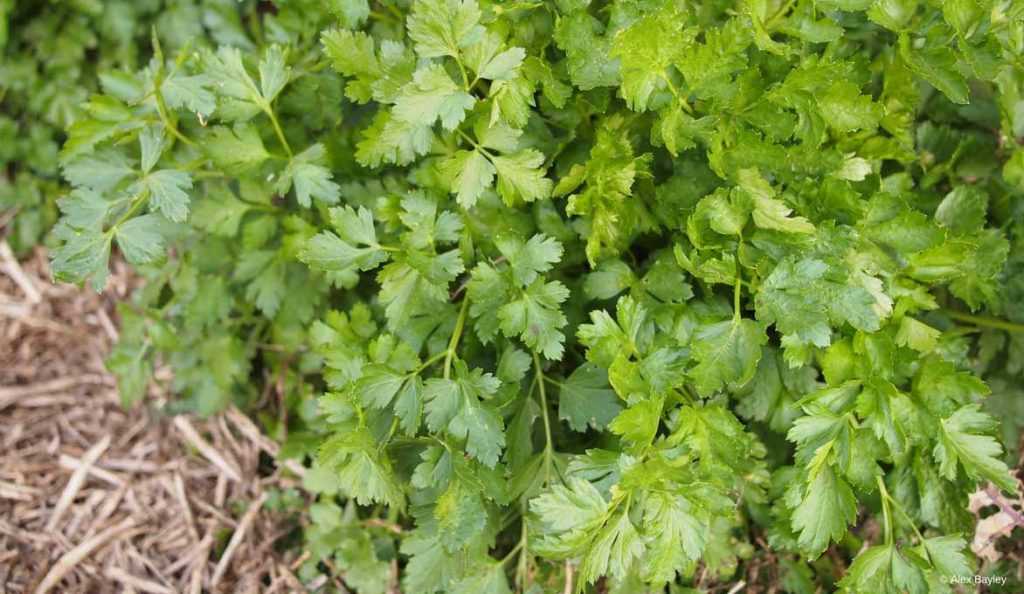
Mulching around parsley plants helps maintain good soil moisture
Companion planting in the vegetable garden
In the vegetable garden, umbellifers (Apiaceae) and Alliaceae generally protect each other from their respective pests. A well-known pairing is carrots repelling onion flies and onions repelling carrot flies. When these two plants are grown near each other, they create a protective synergy against pests. Parsley, it should be noted, belongs to the Apiaceae family and thrives alongside onions, leeks, chives, etc. It is also said to enhance the fragrance of rose bushes. However, avoid growing parsley near other Apiaceae (carrots, celery, parsnips, fennel, coriander, etc.).
From a practical standpoint, in a home vegetable garden, it’s rare to grow entire rows of parsley. Instead, it’s best to allocate a spot at the end of a bed or a small square for this distinctive herb.
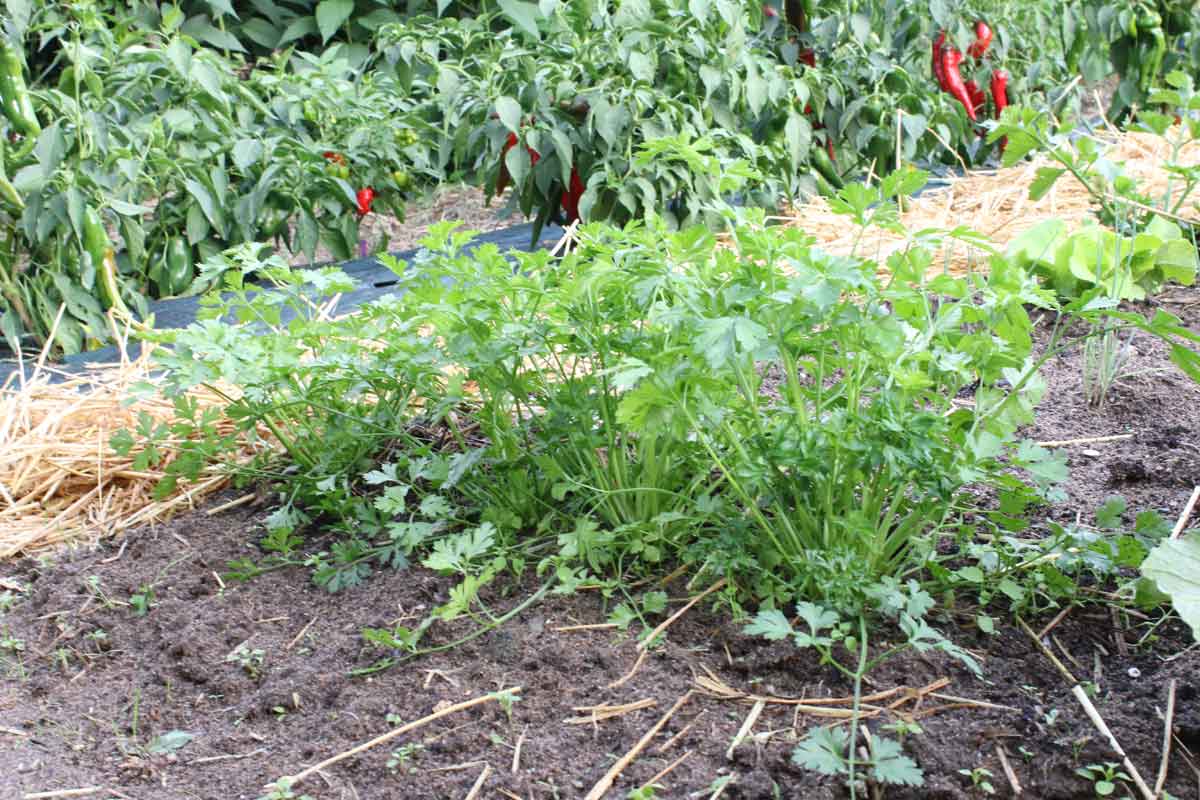
A few parsley plants at the end of a bed are enough for regular and generous harvests – Here, it is paired with chives
Harvesting and Storage
Harvesting Parsley
Parsley can be harvested in its first year, typically three months after sowing, once the plants reach about 15 cm in height. Harvesting continues, depending on your regional climate, until November or December. Simply snip the stems with scissors or pinch them off as needed for cooking.
Always begin harvesting by removing the outer leaves first without cutting the central shoot, as this stimulates the plant and encourages new growth.
To prolong leaf production into the second year, cut back flower stems in spring to force the plant to focus on foliage—unless you intend to collect seeds.
Storing Parsley
Parsley is best enjoyed fresh, picked as needed. However, if you’ve harvested more than required, here are some storage tips to avoid waste:
- For short-term use (within a week), place the stems in a glass of water. Change the water every couple of days to prevent the leaves from yellowing too quickly.
- To enjoy parsley in winter, you can freeze it. Wash and dry the sprigs thoroughly, then bundle them and store in a freezer bag.
- For drying, wash the branches, pat them dry, and hang them upside down in a dry, airy spot. Once brittle, crumble the leaves and store in an airtight container away from light.
Growing Your Own Parsley Seeds
At the end of the first year of cultivation, it’s entirely possible to keep your parsley plants. Being a biennial plant, it will produce its flowering stems in the second year of growth, allowing you to harvest a few leaves but most importantly collect your own seeds.
From late summer, in August-September of the second year, the umbels will dry out and the seeds will detach. Harvest the seeds by rubbing the umbels between your fingers to release them. You can also cut the umbels and continue drying them in a well-ventilated area until the seeds come off easily.
Another approach is simply to let the seeds self-sow naturally. They will germinate in late summer of the second year or in the following spring. This method isn’t ideal for gardeners who prefer neat, orderly beds, but for those practising natural gardening or permaculture, it’s perfectly suitable.
If you’re growing several parsley varieties, it’s best to let only one variety flower per year to avoid cross-pollination with other varieties. Also avoid letting celery flower in the same year, as it can hybridise with parsley. You might add a selection criterion by removing weaker or diseased plants. Finally, when harvesting seeds, keep only the main umbels – those whose seeds have the most nutrients and will germinate best.
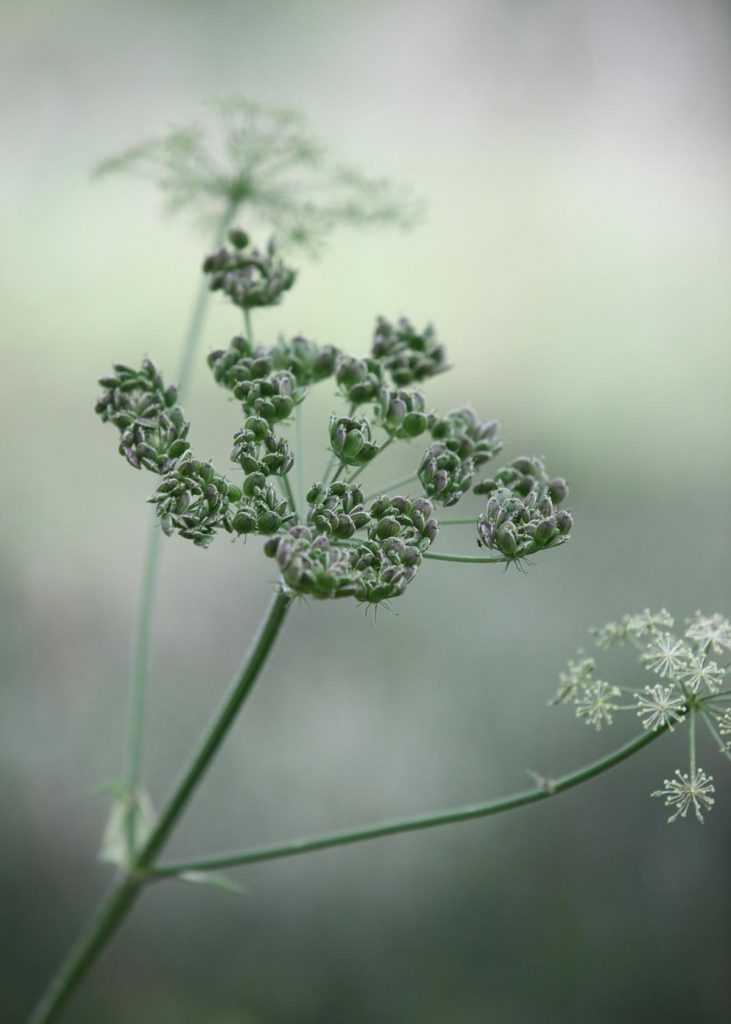
Parsley seeds, ready for harvesting
Uses and Benefits of Parsley
Using Parsley in Cooking
Parsley is versatile in the kitchen, having a pot of parsley always to hand provides excellent culinary service!
It is often included in bouquets garnis alongside thyme, bay leaves and rosemary. Combine it with garlic and olive oil and you get the famous persillade, capable of enlivening any vegetable dish. It is also frequently used as a decorative element on plates (can you imagine devilled eggs without parsley?). It can be finely chopped and added to dishes at the end of cooking, just after removing them from the heat. This way, you avoid losing its flavour and degrading its vitamins.
Root parsley, on the other hand, is used in soups.
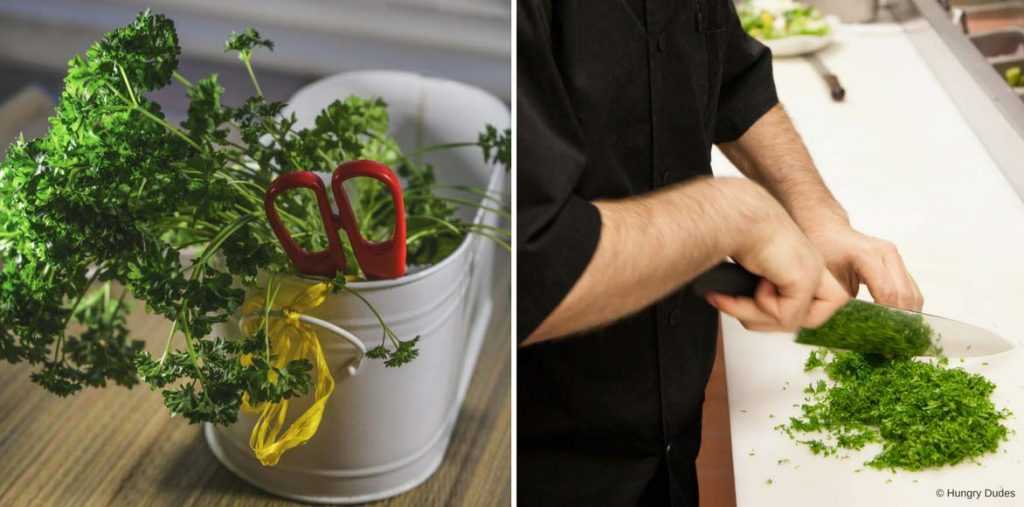
Storing and preparing parsley
The Benefits of Parsley
Parsley aids elimination and thus promotes good digestion. To benefit from these properties, you can prepare a parsley herbal tea by chopping the equivalent of a teaspoon of leaves per cup of boiling water. Let it steep for 5 minutes and strain before drinking.
Beyond its aromatic taste, parsley is a plant with many virtues:
- It prevents anaemia as it is rich in vitamins and minerals. Notably, it has very high levels of vitamins C and A: 100g of raw parsley contains four times more vitamin C than 100g of an orange and four times the recommended daily intake of vitamin A. To fully benefit from these vitamins, however, you should avoid degrading them through cooking
- It is a good stimulant for the nervous system
- It has detoxifying and diuretic properties that promote elimination.
- It speeds up the onset of menstruation and regulates the menstrual cycle
- It is also an effective plant for combating bad breath.
Useful resources
Discover our wide range of parsley: we offer numerous varieties as seeds or young plants.
Frequently asked questions
-
Why does parsley turn yellow?
The possible causes are numerous, depending on where and when the parsley turns yellow. - The outermost leaves turning yellow is completely natural; they have finished their function and make way for new young leaves. - Is the entire plant yellowing? This could be due to a nutritional issue (soil or substrate too poor) or environmental factors (cooling temperatures), but it may also be caused by a pest. In the case of parsley, the carrot fly could be the culprit: its larvae burrow into the roots, causing the plant to yellow and eventually die. - Also note that in the second year of cultivation, the leaves are less attractive than in the first year. This is because the plant directs its energy towards reproduction (forming flower stalks, blooms, and then seeds). The leaves then take a backseat and become paler.
-
Why is my parsley bolting?
Parsley is a biennial plant with a life cycle spanning two years. In the first year, parsley develops its vegetative parts (leaves, roots), and in the second year, it focuses on reproduction (flowers, seeds). It is therefore entirely normal for it to bolt (go to seed) in its second year of cultivation.
However, if parsley is stressed—exposed to excessively hot and dry conditions or deprived of water for too long—it may bolt prematurely. To prevent this, choose a more suitable location for future sowings, such as in the shade of a tree or a wall.
-
Why isn't my parsley germinating?
It is entirely possible for seeds not to germinate, even for the most experienced gardeners: • A seed is a living thing. Always check the germination viability period. This refers to the length of time during which the seed is capable of germinating. This information is always indicated on seed packets. For parsley, it is 3 years. • Poor storage conditions reduce germination viability. Keep your seed packets indoors in a dry place, not too warm in summer, and away from direct sunlight. • Most vegetable seeds have two (sometimes more) essential requirements for successful germination: adequate temperature and moisture. The most important factor is maintaining consistent moisture – neither excessive nor insufficient. To achieve this, water lightly and regularly during germination and continue while the plants are young. It's also crucial to sow during the periods indicated on the seed packets. • Damping-off is another possible but rarer issue, caused by various species of pathogenic fungi that kill young seedlings. This can be prevented by avoiding overwatering and by dusting the sowing with charcoal or cinnamon powder.
- Subscribe!
- Contents


































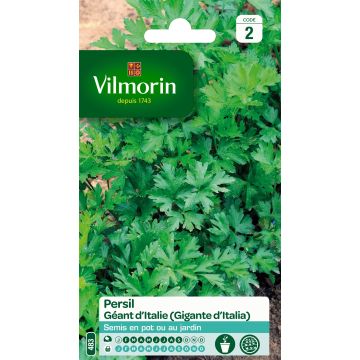
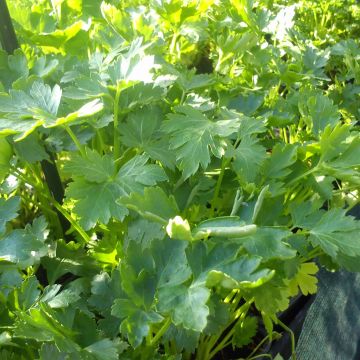
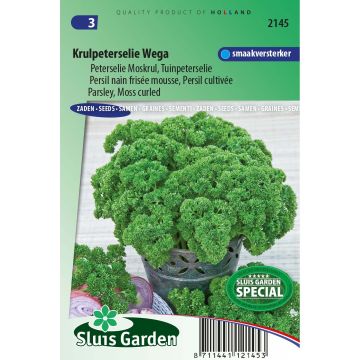

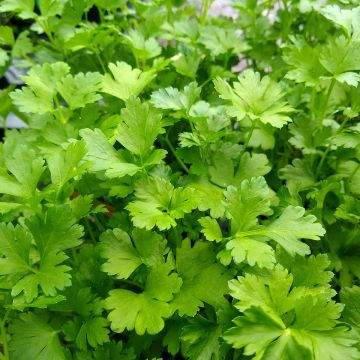
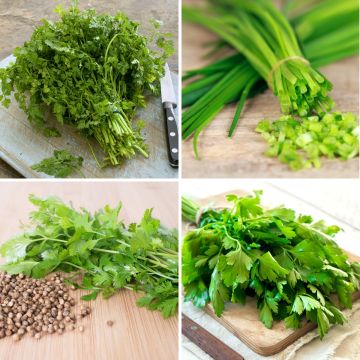



Comments